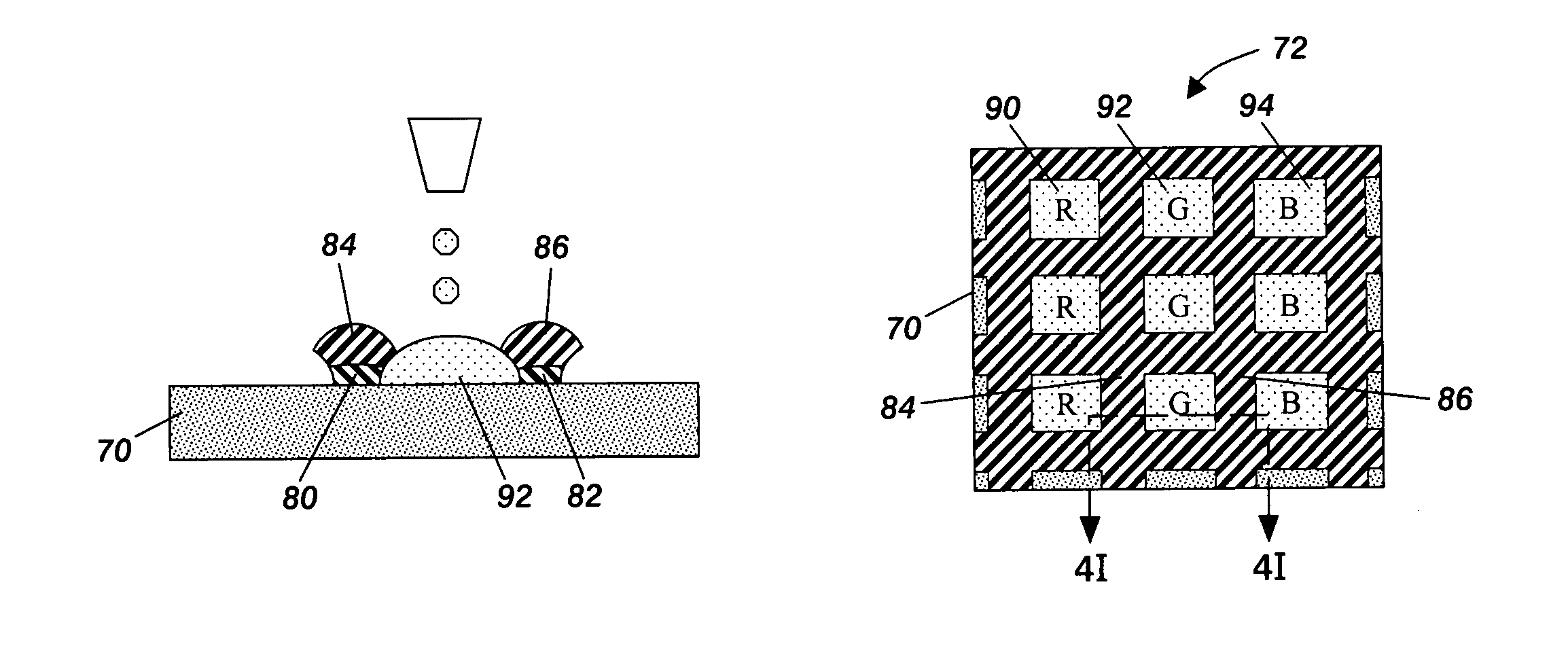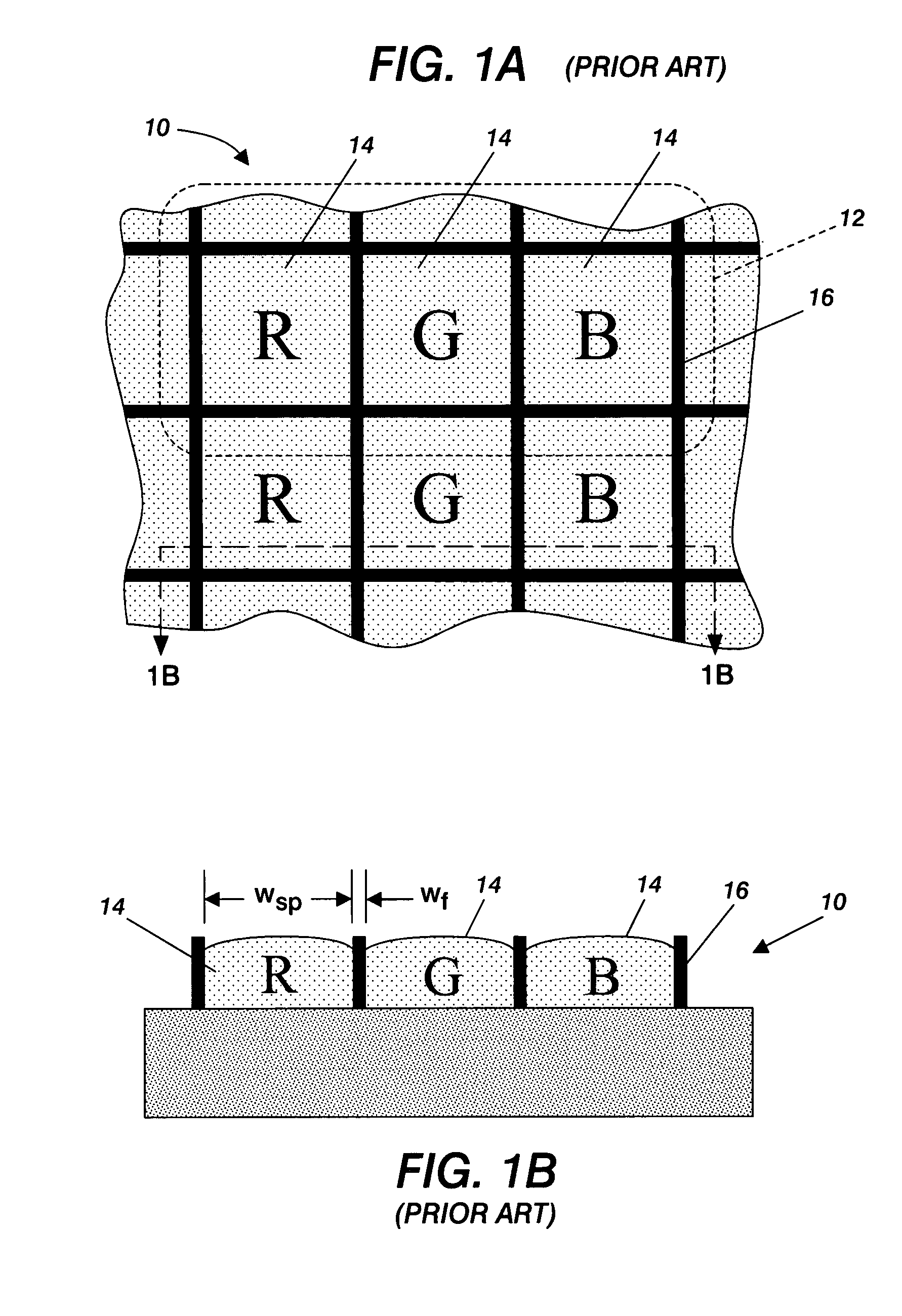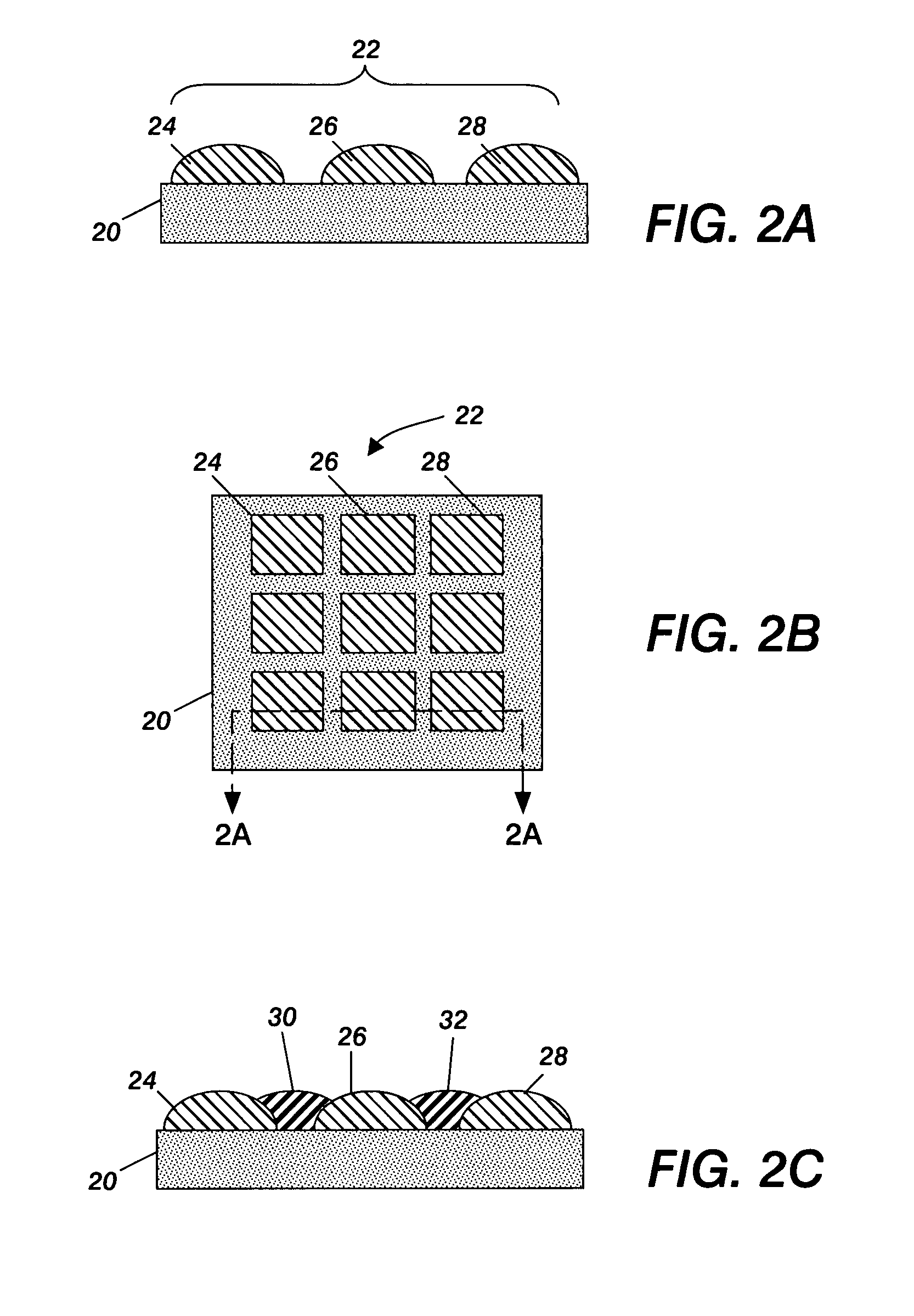Additive printed mask process and structures produced thereby
a printing mask and additive technology, applied in the field of additive printing mask process and the structure produced by it, can solve the problem of less control of target materials, and achieve the effect of preventing the wetting of material abutting
- Summary
- Abstract
- Description
- Claims
- Application Information
AI Technical Summary
Benefits of technology
Problems solved by technology
Method used
Image
Examples
Embodiment Construction
[0040]With reference initially to FIGS. 1A and 1B, there is shown therein a structure of the type formed by one embodiment of the present invention. FIGS. 1A and 1B are illustrations of a portion of a color filter 10 for a plat-panel display. As mentioned, such a filter comprises a number of pixels 12, each pixel being composed of three or more sub-pixels 14. The actual geometry of the sub-pixels, such as triangular, striped, diagonal, etc. is not critical to the operation of the present invention, but will be discussed in further detail below. Sub-pixels 14 are each primarily transparent to a specific color of light, such as red, green or blue. The individual sub-pixels 14 are separated by a pixel frame 16. Pixel frame 16 is composed of a number of horizontal and vertical elements which form cavities, shown in FIG. 1B, for the receipt of material forming sub-pixels 14. For reference, it will be assumed that the width wsp of each sub-pixel is on the order of 25 to 30 μm and the widt...
PUM
| Property | Measurement | Unit |
|---|---|---|
| diameter | aaaaa | aaaaa |
| width | aaaaa | aaaaa |
| width | aaaaa | aaaaa |
Abstract
Description
Claims
Application Information
 Login to View More
Login to View More - R&D
- Intellectual Property
- Life Sciences
- Materials
- Tech Scout
- Unparalleled Data Quality
- Higher Quality Content
- 60% Fewer Hallucinations
Browse by: Latest US Patents, China's latest patents, Technical Efficacy Thesaurus, Application Domain, Technology Topic, Popular Technical Reports.
© 2025 PatSnap. All rights reserved.Legal|Privacy policy|Modern Slavery Act Transparency Statement|Sitemap|About US| Contact US: help@patsnap.com



